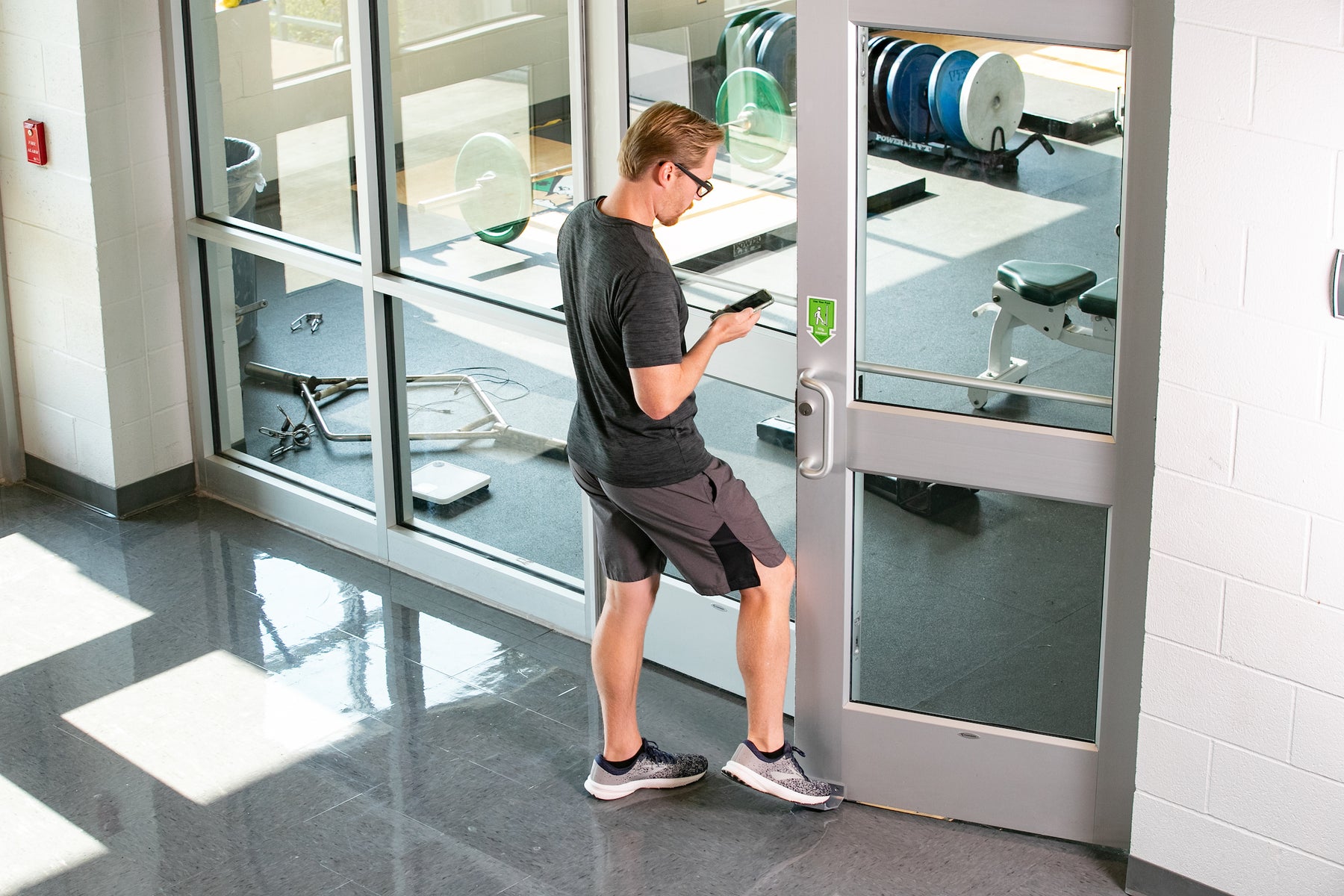when you spend $50

Ultimate Guide to ADA Door Requirements
The Americans with a Disability Act (ADA), enacted in 1990, exists to mitigate accessibility challenges, providing guidelines for door requirements. Outlining requirements for door clearance, door width, and the door handle, the ADA assures access for disabled and non-disabled people alike.
Whether you have a temporary injury or permanent disability, navigating public spaces with physical limitations can be challenging. Grabbing a bite to eat at your favorite local eatery sounds simple enough until you are faced with a heavy restaurant door. Although there is a reason the doors are heavy, it can create problems for individuals with limited mobility.
ADA Compliant Door Width Requirements
ADA compliant door width is an essential and necessary consideration for appropriate access to public entrances. The ADA specifies that doorways with swinging doors use a minimum opening of 32 inches measured between the face of the door and the opposite stop. With the exception of doors with openings more than 24 inches deep requiring a minimum opening of 36 inches, this 32-inch clear width stands as the requirement for hinged doors, sliding doors, and folding doors, as illustrated in the figure below from section 404 of the ADA.
ADA Compliant Door Clearance Requirements
While the ADA outlines a general requirement for door width, an individual’s direction of approach and the door’s method of use impact the guidelines for maneuvering clearances. In section 404, the ADA provides the specific dimensional requirements for maneuvering door clearances - or the space needed around the door to ensure a person’s access to entry.
The minimum clearance for manual swinging doors changes depending on the direction of approach and method of use (push or pull). For example;
- If a person approaches the door from the front and must pull the door to open, the ADA requires a minimum of 60 inches of clearance on the opening side perpendicular to the doorway and a minimum of 18 inches of clearance on the side parallel to the doorway beyond the latch.
- If a person approaches the door from the hinge side and must push the door to open, the ADA requires a minimum of 42 inches of clearance on the opening side perpendicular to the doorway and a minimum of 22 inches of clearance on the side parallel to the doorway beyond the latch.
These clearances ensure that a person using assistive equipment has enough space to move, enter and exit through the door. The table below comes directly from section 404 of the ADA and details the requirements for maneuvering clearances at manual swinging doors and gates.

ADA Door Handle Requirements
While door width and maneuvering clearances play an essential role in assuring entry access, the ADA also outlines compliance requirements for handles, pulls, latches, locks, and other operable parts on doors. More information on the ADA door pull handle requirements outlined below can be found in sections 404.2.7 and 309.4 of the ADA.
Figure 404.2.7 Door and Gate Hardware
The ADA requires that operable parts of door hardware be a minimum height of 34 inches and a maximum height of 48 inches, with a maximum required force of 5 pounds. That means the door closer resistance must be 5 pounds or less to accommodate users' various upper extremity abilities.
The ADA includes further accessibility recommendations with an advisory discouraging the use of door hardware that may be inaccessible to individuals with upper extremity limitations.
“Hardware that requires simultaneous hand and finger movements require greater dexterity and coordination, and is not recommended.”
StepNpull Solution
ADA compliance in access to entry, including door width, clearance, and handle requirements, is imperative to ensure that a facility is accessible. StepNull offers a hands-free solution that meets the ADA standards for accessible design and ensures that your facility is inclusive of individuals with upper extremity or mobility impairments. Our foot-operated door pull allows the user to open a door using your foot instead of a door handle, eliminating the weight of the door as a factor to accessibility and making navigating public facilities less challenging.

